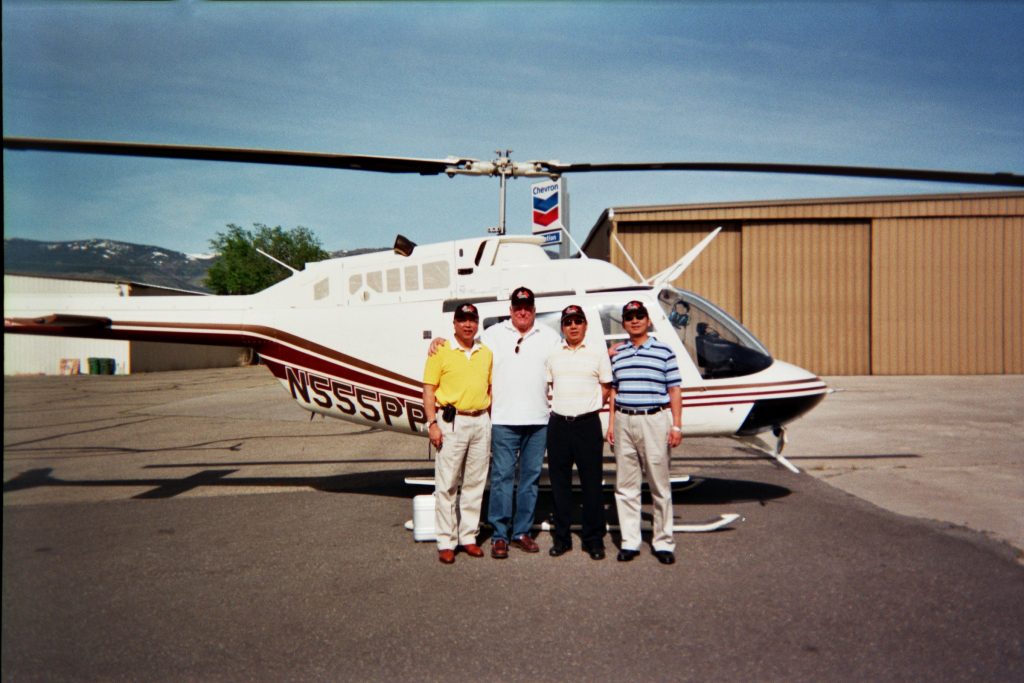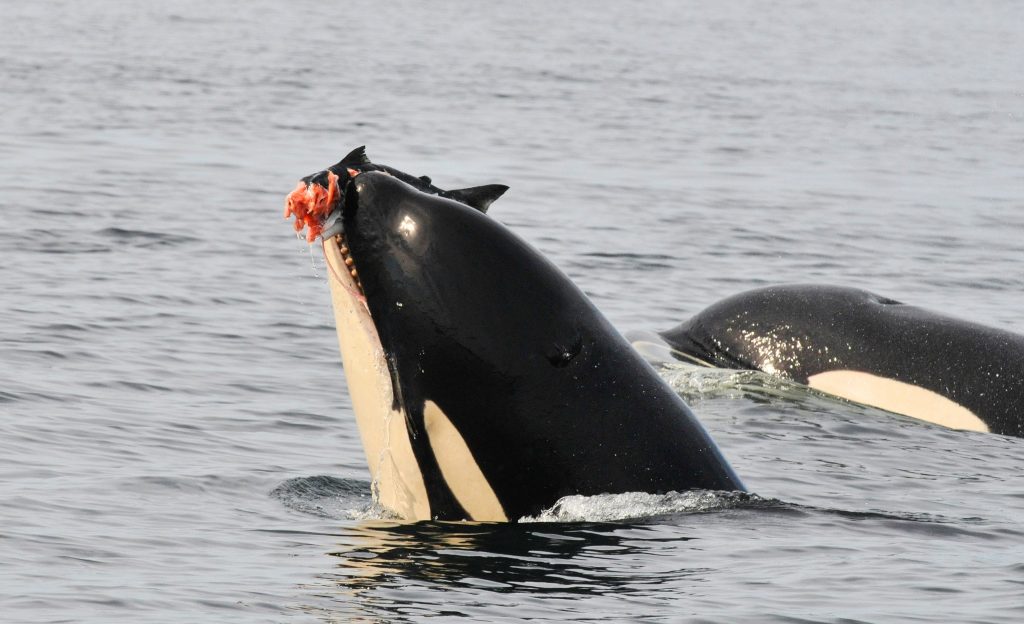The irony and illogic of the Guardians’ nuisance lawsuit defied belief. A group ostensibly dedicated to protecting nature was attacking and disabling a company equally dedicated to mitigating mankind’s impact on the Earth; to restoring millions of worn out acres of agricultural land to a much healthier, natural state; to curtailing the runoff of synthetic fertilizers steadily polluting water sources from Florida to California and throughout China, and to improving the nutritional quality of food supplies around the world.
by William B. Scott
ENVIRO INSANITY
In 1978, Bill L. Minor was looking forward to an enjoyable fishing trip, soaking up nature’s serenity, while dipping a line in the East Fork of the Walker River. He had flown into a friend’s private airstrip near the high desert foothills of the Eastern Sierra Nevada mountains, about 40 miles southeast of Lake Tahoe, and driven to a favorite fishing spot along the river.
At some point, a local farmer drove up and started chatting. The two got acquainted as Bill leisurely drowned a few worms, discovering they shared the common language of men who loved and valued the land. Later in the day, Bill stopped by the gent’s spread—and was stunned by his host’s amazing garden. Tomatoes bigger than softballs. Zucchini squash 20-24 inches long. Healthy corn standing six feet tall, its stalks laden with large ears.
“How do you get this kind of yield?” Bill asked in awe.
“Just mixed some yellow dirt into the ground,” the farmer smiled, handing Bill a sample. “Works on livestock, too.” Chickens that ate the stuff were laying an abundance of large eggs, and cows were producing milk in record quantities.
“Where’d you find this ‘dirt’?” Bill pressed, inspecting the ochre-colored soil.
“Well, there’s a whole mountain of it out there,” the man said, pointing. “Coupla thousand-foot piles.” The observant gentleman farmer had noticed deer nibbling on the yellowish soil, and figured there had to be a good reason. He’d shot a healthy buck and was impressed by the venison’s taste and high quality. That led to feeding “yellow dirt” to his own animals and working it into the vegetable garden’s soil. Results were astounding.
[wp_ad_camp_1]
Bill was more than idly curious. He had grown up in a Missouri farming and ranching family, held a business degree, and had studied agronomy and animal husbandry at the University of California-Davis. He subsequently sent a sample of the intriguing substance to a friend who headed the food science department at the University of Washington. An analysis indicated the innocuous “yellow dirt” was an abundant blend of micro- and macro-mineral elements; chock full of nutrients; naturally buffered and easy for both plants and animals to assimilate; completely free of toxic metals, and had a pH of 4.9 (a measure of soil acidity). In short, it was nearly perfect fertilizer—and 100 percent natural.
A product of prehistoric volcanic activity, the “yellow dirt” is indigenous to Nevada’s Walker River Valley and the only known deposit of soil having such a perfectly balanced composition. Bill promptly secured a long-term lease on 2,500 acres and launched a campaign to explore the attributes of what became known as “Orykta”.
Over the next few years, he set up technology transfer agreements with a long list of universities in the U.S., Israel, China, Costa Rica, Malaysia, etc. to conduct rigorous tests on Orykta. The results appeared too good to be true, but were backed by hard-core data:
•Mixing Orykta with feed improved the growth rate and overall health of dairy cows, beef cattle, swine, poultry and horses—without additional synthetic products. Animal tissues assimilated nutrients far better than was realized using manmade mineral mixtures. By enhancing the transfer of nutrients through intestinal membranes, feed was digested better, contributing to more weight gain, better reproduction and healthier offspring. In technical terms, Orykta had a Total Digestible Nutrient or TDN level of 96-97 percent availability, exceeding any other product on the market.
•Plants grown in Orykta-enhanced soil showed greatly improved assimilation of soil nutrients (nutrient uptake). Crops consistently demonstrated higher yields at reduced costs. Fruits and vegetables grew faster and yielded larger produce. Flowers were bigger and their colors more intense. Lawns and golf courses were lusher and greener, yet required far less fertilizer.
•Soil depleted of nutrients was revitalized. Total porosity and water retention properties were improved, reducing the loss of nutrients and significantly improving moisture retention.
•Waterways, ponds, wells and estuaries were unharmed, because Orykta is a natural material. Runoff from fields treated with chemical/synthetic fertilizer had been polluting groundwater for decades, and government agents were finding residues in drinking water. “Nutrient pollution is one of the most pervasive water-quality problems facing this nation,” according to Charles Fox, assistant administrator for water at the U.S. Environmental Protection Agency.
•Finally, preliminary testing indicated that Orykta is beneficial to aquaculture, which researchers believe may be vital for feeding millions around the globe.
Overuse of man made fertilizers—typically a combination of nitrogen (N), phosphate (P205) and potash (K20)—also was depleting Earth’s arable land. Over the last three decades, fertilizer use almost doubled from less than 70 million metric tons to more than 138 million metric tons per year. Nevertheless, as topsoil became depleted of vital nutrients, mankind’s traditional response has been to use more and more artificial fertilizer, despite its deleterious impacts.
The net result, Minor discovered, had been a sharp decline in the amount of land fertile enough to grow crops in some countries, a decrease in the quality of drinking water, a virtual explosion of oxygen-stealing algae “blooms” in estuaries, and steadily diminishing nutrient values of plant and animal products. Consequently, today’s food is significantly less nutritious than what our parents and grandparents ate, and most now sold in supermarkets contains chemical additives and residues of fertilizer.
Rigorous testing proved that Orykta did not harm the environment. Instead, it restored land that literally had become “locked up” by long-term crop growth and overuse of chemicals. “Locked up” meant the soil “was like an old race horse that had been run too long and too hard,” Bill said. It was worn out.
Orykta unlocked that soil, by replacing vital minerals and nutrients, and enhancing plants’ ability to assimilate them. When combined properly with other fertilizers, this naturally benign, non-toxic substance revitalized and restored nutrient balance.
Armed with 20 years of data validating the agronomy science behind Orykta, Bill’s company purchased those 2,500 acres of still-geologically active land in northwest Nevada on November 30, 1998. Western Engineering and Surveying Services of Carson City, Nevada, had estimated the high desert region contained approximately 1.4 billion tons of Orykta—more than 938 million cubic yards. It was time to get serious about bringing Orykta to a global agricultural market.

Bill’s prior business operations and a network of international contacts opened doors in Central America, South America and China. Costa Rica, in particular, had instituted strong environmental standards and welcomed Orykta as a natural alternative to petrochemical fertilizers. Colombia’s coffee growers also were interested, especially as the demand for organic java increased.
Soon, the Precious Minerals Mining and Refining (PMMR) company was shipping hundreds of tons of Orykta per year, and racking up certifications for being environmentally friendly, toxin-free and of significant benefit to crops and livestock. For example, the Organics Materials Review Institute certified that Orykta “may be used in certified organic production or food processing and handling according to the USDA [U.S. Department of Agriculture] National Organic Program Rule,” clearing the all-natural material for use as a crop fertilizer, soil “amendment” and “livestock feed” ingredient. Similar certifications were awarded by Costa Rica, Nicaragua and, ultimately, China.
Although classed as a mining operation, the Orykta extraction process was strictly a surface operation. A front-end loader scooped and loaded the material into a truck, which hauled it to a nearby processing plant. There, the yellow dirt was crushed to a uniform consistency, dried (rarely necessary) and either sacked or loaded into rail cars for bulk shipping. Nothing was added or removed.
In 1998, Minor was summoned to Beijing, China, for a meeting with the nation’s Minister of the Interior. Chinese officials had previously informed Bill that runoff from long-term use of about 60 million tons of manmade chemical fertilizer was polluting the country’s water wells, rivers and wetlands. Further, ever-increasing amounts of petrochemical fertilizer were required to obtain desired crop yields, further threatening water supplies.
Bill and his team were ushered into a conference room dominated by a massive mahogany table. After introducing a group of officials, the minister opened by stating that, when Chinese scientists started testing Orykta, they believed the ocher material was probably Bentonite, an absorbent clay derived from volcanic ash. It was discovered in the late 19th Century at Fort Benton, Montana.
Analyses by the College of Agricultural Science, though, had proved Orykta was a unique material. Although of volcanic origin, the “yellow dirt” was free of toxins and a purely natural, virtually ideal fertilizer. The Interior minister—a trained geologist—pulled up a large satellite image of Bill’s Orykta mine, bordered on three sides by high mesas. He proceeded to describe the geology of the entire area, and how a freak of vulcanism had created a mineral deposit that worked synergistically with other soil constituents. And China wanted tons
of it.

After 16.5 years of diligent effort, Bill’s company finally was granted a license to import Orykta. Soon, PMMR had a five-year contract to deliver 8 million tons to the People’s Republic of China, a nation of more than a billion citizens. Obviously, an expansion of the open-area mine would be necessary. Bill filed a request through government channels and looked forward to its timely approval.
The U.S. government was hard at work erecting barriers, though. The environmentally conscious Clinton Administration was attempting to replace mining laws that had governed mineral-rich areas of the American West since 1878. Only partially successful, the administration still managed to transfer millions of acres from the Department of Interior’s Bureau of Land Management to the Department of Agriculture’s U.S. Forest Service.
The BLM had decades of experience managing western lands, and knew how to balance the needs of wildlife, livestock grazing and mineral extraction for the benefit of all Americans, while caring for the natural environment. In general, the BLM had handled grassland and desert terrain, while the U.S. Forest Service managed timberland.
Virtually overnight, a century of sensible land management practices were upended. The Forest Service took a dim view of mining, having seen the devastation done by hydraulic mining and the associated clear-cutting of forests throughout the West. Right away, Bill was forced to hire a USFS-approved expert to conduct yet another environmental impact study. He filed the statement…and waited. Whether well-meaning or pernicious, he never knew, but USFS bureaucrats definitely slow-rolled Minor’s application to expand the Orykta mining operation.
Then all Hell broke loose. In the early 2000s, four Berkeley, California-based women of the Wild Earth Guardians filed suit against the U.S. Forest Service, demanding that a type of sage grouse be added to the list of endangered species. The bird was not indigenous to the high desert region where PMMR’s Orykta mine was located, but that area was included in a wide swath of land covered by the lawsuit.
The U.S. Forest Service immediately constrained Bill’s mining operation to 40,000 tons per year, while it assessed the merits of WEG’s lawsuit. It’s unlikely that anybody from the Santa Fe, New Mexico-headquartered organization ever laid eyes or set foot on the high desert region east of the California-Nevada border, but its agenda was loud and clear. “There are more than 300 million acres of public lands in the 17 western states and our goal is to prevent their capture and destruction by private, extractive interests,” its website declares. Even though the PMMR “mine” wasn’t a pit or bored-tunnel mine, it was still “extractive” and it was “private.”
[wp_ad_camp_1]
Therefore, the hills of natural Orykta constituted a viable target for a radical environmental group committed to “using an effective combination of conservation science, ecological restoration, grassroots mobilization, and strategic litigation [to shield] the unparalleled biological diversity and wildness in the last, best places of the American West.” In short, the Wild Earth Guardians had a well-funded weapon—litigation—and Bill’s mine was an enemy to be obliterated. The sage grouse was merely the WEG’s excuse, a convenient means to an end.
The irony and illogic of the Guardians’ nuisance lawsuit defied belief. A group ostensibly dedicated to protecting nature was attacking and disabling a company equally dedicated to mitigating mankind’s impact on the Earth; to restoring millions of worn out acres of agricultural land to a much healthier, natural state; to curtailing the runoff of synthetic fertilizers steadily polluting water sources from Florida to California and throughout China, and to improving the nutritional quality of food supplies around the world.
Bill and Nevada state officials pointed out that hunting of the supposedly endangered sage grouse was permitted all over the West. Besides, Bill’s mine wasn’t even within the grouse’s normal range, a fact underscored by a map on the Wild Earth Guardian’s website. Doesn’t matter, Forest Service bureaucrats sniffed. The bird might wander into that area. Bottom line: No expansion of Orykta-extraction operations, while the federal forest-management agency took a hard look at the WEG’s claims.
Although he continued to process raw material and ship Orykta to international users, a thoroughly frustrated Bill Minor was unable to fulfill his new obligations. Consequently, PMMR had no alternative to defaulting on huge contracts with China and other key customers. The company lost millions of dollars, an innocent victim of a manufactured issue that clearly was not an issue.
“I never thought I’d be thwarted by a damned bird,” Bill said.
But he wasn’t beaten. The WEG lawsuit kicked off an incredibly long, expensive battle. Over the next 8.5 years, Bill spent more than a half million dollars trying to comply with U.S. Forest Service requirements, working with five different district rangers and a string of head geologists as they cycled through the Bridgeport, California, USFS office. At one point, the agency attempted to incorporate the Western Yellow Billed Cuckoo into the Guardian’s lawsuit, forcing Bill to spend another $46,000 on a consultant. The fowl expert ventured out to the Orykta mine every morning for months, blew on his bird call, and waited for a response. Not once did a Yellow Billed Cuckoo answer, for a simple reason. None of the endangered birds existed in that region of Nevada.
Under the Obama Administration, another revised national mining plan was introduced at the behest of powerful environmental groups. Only a single new mining operation was approved, during President’s Obama’s eight years, stymying countless oil, gas, gold and silver companies. One tidbit of good news, though, was the Forest Service finally decided the sage grouse was proliferating and didn’t warrant being declared an endangered species. Nevertheless, the forest management agency still has not cleared PMMR to expand operations and extract enough Orykta to meet a rapidly growing global demand.
Today, PMMR has the capacity to process 800 tons of Orykta per hour, and is shipping material to domestic and overseas customers. Research and testing continue, and new applications for Orykta are still being discovered. One potential use is “neutriceuticals,” over-the-counter supplements that are not regulated by the federal Food and Drug Administration.
Bill wryly declares that Orykta is being considered a “forty-one-year overnight success,” in spite of restrictions on output. His dogged persistence has overcome staggering legal, scientific and bureaucratic challenges to bring an inherently environment-friendly, highly beneficial, 100 percent natural product to an international market. And testimonials to its benefits continue to roll in:
•“Feed saving of over 20% in the rations of a steer using [only] 4 ounces per day of daily intake of Orykta compared to a control steer of the same breed, from the same herd, for the same number of days. The steer fed Orykta in his ration had more daily gain than [the] control steer.” — James Gaither Ranch, Los Molina, California.
•“Since using Orykta, our soil nutrient levels have increased and there has been a decrease of toxicity of the nitrogen levels.” — Harold Reeder, president of C & R Farms, California.
•“Orykta has increased our yields…is a source of essential nutrients, and has allowed us to decrease our use of more expensive blended fertilizers. There are no toxic properties or harmful microbes.” — Rafael Angel Varela, president, Crops-Livestock Permanent Committee, Costa Rica.
•“A dairy herd of 264 cows showed a gain of 8%, after adding Orykta to their regular ration. Tests conducted by Pharmatox Laboratories, Ames, Iowa, and verified by County Agent, Staton, Nebraska,…prove conclusively that 25-30% less fat passes through animals fed rations with trace minerals added.” — Sylvester-Nelson Farms, Mandan, North Dakota.
Bill is cautiously expanding deliveries of Orykta to myriad U.S. customers, but most of his product goes overseas. He admits to worrying about government-imposed “unknowns” and huge agricultural and fertilizer conglomerates “smashing us like a bug.” The latter attacking PMMR would be the height of ignorance and self-destruction, because Orykta doesn’t compete with those companies’ products. It enhances them. Hardly a replacement for traditional petrochemical fertilizers, it works synergistically with them, magnifying performance and improving outcomes.
Stepping back and assessing the impact of the Wild Earth Guardians’ nuisance lawsuit, which severely crippled Orykta production for almost a decade, leads one to head-banging questions. During those 8.5 years, how many acres of arable land around the globe deteriorated to the point they’re no longer capable of viable food and livestock production? How many tons of plant and animal foodstuffs having less-than-desirable nutritional value were consumed by millions of men, women and children? How many of them are malnourished or suffer from illnesses linked to fertilizer-derived toxins in their food? How many wells, rivers, estuaries and wildlife-dependent wetlands were tainted by toxic runoff from over-fertilized crop lands, simply because a harmless, all-natural, soil-invigorating mineral additive wasn’t available? Finally, how many human beings suffered needlessly from malnutrition in poor nations all around the world, during those eight-and-a-half years that Bill Minor was fighting his own government and a high-minded group of naive environmentalists claiming to be “A force for nature”?
Rational U.S. citizens hope that President Donald J. Trump’s head of the Environmental Protection Agency, Scott Pruitt, and new secretaries of Interior and Agriculture will restore desperately needed balance to the management of America’s precious lands, both public and private. These leaders’ first challenge will be to rid their agencies of rabid bureaucrats, taxpayer-supported public servants who seem to believe the very existence of human beings is a threat to the nation’s wildlife, land, water and air. Yes, nature’s irreplaceable treasures must be protected, but through smart, logical policies developed via inputs from a spectrum of citizens, not just special interests having the most money and armed with powerful legal arsenals.
All American stakeholders must face several hard facts: By the year 2050, the world’s population will top 9 billion. Human encroachment, accentuated by poor farming and land management techniques, threaten to reduce today’s global acreage of productive cropland from 1,500 million hectares (3,700 million acres) to 1,450 million hectares. Couple that with an ever-increasing demand for clean water, and leaders must ask: Will millions of people die of thirst and hunger?
Armies of dedicated people—from massive agricultural conglomerates and equipment manufacturers to individual farmers and ranchers on multiple continents—are working diligently to make sure every man, woman and child has enough to eat and drink. Either environmentalists join forces with these entities, or they will be sidelined, ignored and reduced to irrelevance. Allowing human beings to die from malnutrition, or waterways and wells to become hopelessly polluted, all in the name of being “A force for nature,” is no longer an option. True environmentalists must climb down from their ivory towers, put on their grownup boots and walk the land with today’s devoted conservationists—farmers, ranchers, miners, energy professionals, and water experts. Committed, resolute people like Bill Minor. Mother Earth will be saved by intelligent partnerships, not mindless lawsuits and feel-good ideology.
What drove Bill Minor and his tiny band of allies to keep fighting the leviathans of Big Government and Big Enviro all those years? Most rational beings would have thrown in the towel and retreated from the battlefield long ago.
Because he and many others were alarmed by escalating problems associated with nitrate poisoning of water wells in California’s Central Valley—often called America’s breadbasket—as well as the Chesapeake Bay, mouth of the Mississippi River and Florida’s massive wetlands and swamps. He worried about the rise of heart disease, cancer and an alarming number of kids maturing much faster than previous generations, thanks to petrochemical fertilizers winding up in our food. Orykta, he was convinced, would counter those problems by revitalizing soil, producing higher yields, reducing nitrate poisoning of water, and significantly improving the nutritional value of food.
“We are what we eat,” Bill declares, echoing the sages of yesteryear. “Who’ll stand up for what’s right? If not me, then who? And if not now, then when?”
William B. Scott is the former Rocky Mountain Bureau Chief for Aviation Week & Space Technology magazine, author of The Permit, and coauthor of Space Wars: The First Six Hours of World War III; Counterspace: The Next Hours of World War III, and Inside The Stealth Bomber: The B-2 Story. A native of rural Colorado, he is a Flight Test Engineer graduate of the U.S. Air Force Test Pilot School and holds a BS degree in Electrical Engineering.
[paypal_donation_button]
Free Range Report
[wp_ad_camp_3] [wp_ad_camp_3] [wp_ad_camp_3]
[wp_ad_camp_2]




An excellent article. And Bill is right: “Who’ll stand up for what’s right? If not me, then who? And if not now, then when?” It is being taught in college that success is greed, and mining is evil regardless of the environmental controls, and that a farmer and farm supply companies are out to rape the land and only increase profits (greed). At the same time their insatiable appetite for “things” (somehow not greed) requires more and more resources and of course green fresh vegetables all year long. We must explain that farmers and ranchers want abundant sustainable crops and grasslands as much as they do. We benefit from knee high grass, abundant water, game and little erosion. But as Bill said, we must stand up for it and get the word out, such as the Free Range Report is doing. Here is the hard part. We need to move away from the echo chambers and address those on the other side.